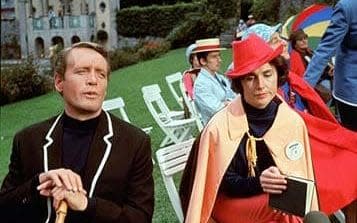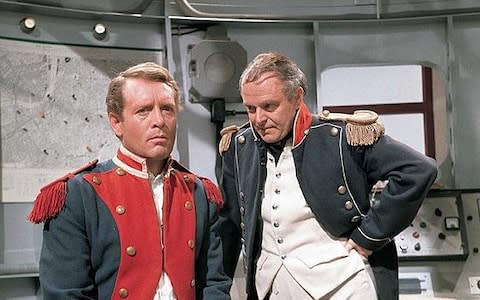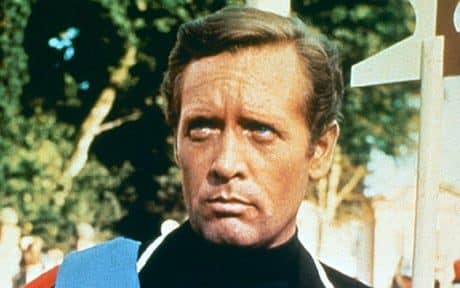How did The Prisoner ever get made?

The mysterious ‘Village’, an evil weather balloon. As ‘The Prisoner’ turns 50, Matthew Sweet revisits one of TV’s strangest series
It’s a Friday night in September 1967. You’ve switched on ITV. What do you see? A sullen sky. A broad horizon. A road to nowhere. A wasp-coloured Lotus 7 roars towards the camera, past the landmarks of Whitehall and into an underground car park. The driver, a handsome fury in a charcoal-grey turtleneck and blazer, storms through a door marked “way out” and into the office of a superior, where he bellows and rants and disturbs the tea-things with his fist.
You’ve probably seen him before. It’s Patrick McGoohan. The actor who plays Danger Man, the small-screen James Bond who never shoots anyone, never kisses anyone, and whose glamorous locations are all on stock footage.

His new series, though, looks different. With thrilling briskness, the title sequence tells a story that would keep some rival productions occupied for weeks. The angry hero is tailed home by a hearse. Knockout gas surges through the keyhole of his living-room door. A robot arm in a hi-tech archive files his photograph in a cabinet marked “resigned”. And then comes the Wizard of Oz moment. A bleary-eyed recovery, many miles from home, in one of television’s most memorably sinister environments. A coastal settlement of winding lanes and well-kept floral borders, where the inhabitants are known only by their designated numbers, and order is kept by a sentient weather balloon called Rover. The Village. A place of murderous quaintness. A British gulag.
Fifty years ago, The Prisoner began serving time. McGoohan – its star, executive producer, and sometime writer-director, a hard-drinking, intransigent Irish-American actor with a sharp Olivier-like edge to his voice – became Number Six, a former secret agent who knew too much to be permitted his freedom. For 17 weeks, he struggled against the mysterious authorities of the Village, personified by Number Two – not an individual, but an office occupied by a shifting cast of guest stars. (Leo McKern, Mary Morris and Peter Wyngarde were memorable incumbents.) He resisted their mind-bending tricks and interrogation techniques, attempted to escape by land, sea and air, and strove to solve the defining mystery of the series – who is Number One?

When the final episode, “Fall Out”, was broadcast in February 1968, that question was answered – with a scene that turned the series inside out, and still feels like a secret that shouldn’t be spoiled. Five decades later, The Prisoner is still detaining audiences in its cryptic, dreamlike world. Even the lifeless 2009 remake has not prevented new viewers from discovering the original on DVD and download, and pondering its mysteries. Few television programmes have offered such searingly bold imagery – human beings reduced to chess pieces; Rover’s smooth plastic skin smothering a rebellious mouth; Number Two, wrapped in a college scarf, and perched in an egg chair under a green dome – and left so much space for the viewer to theorise about the significance of what they’ve seen. To me, Number Six seems related to the dreamers and Angry Young Men who energised the previous decade of British culture: not so young now, but with a chill determination to break through to the truth, no matter how dreadful.
For Samira Ahmed, the broadcaster and television historian, the series taps into some of the oldest stories in our culture. “If the Anglo-Saxon poets had had ATV budgets,” she says, “I think they would have made something not dissimilar to The Prisoner. The show is a meditation on the isolation of the soul and a physical version of the dream process that goes on in every mind.” For Naomi Alderman, the games writer and Baileys prize-winning novelist, The Prisoner is about the suffocating tyrannies of English life.
“It’s a stylised metaphor for the attempt to escape the strictures of society,” she argues, “and how in the end you’ll somehow keep returning anyway.”

McGoohan delighted in such interpretations. In a 1977 interview he said: “Your village may be different from other people’s villages, but we are all prisoners.” If the series has come to be regarded as an enigma to be solved, its premise was supremely legible, particularly to audiences in the middle of the Sixties.
In the cinema, The Ipcress File had put Michael Caine through the psychedelic wringer and suggested that the world of espionage was a place in which a British spy might be in more danger from his bosses than the Russians. On television, The Avengers had primed viewers to mistrust the iconography of Englishness – its picturesque villages were usually perfect simulacra constructed beyond the Iron Curtain, its uniformed nannies always kept a machine-gun under the bassinet blanket. Popular sociology also provided a context: Vance Packard’s The Hidden Persuaders had suggested that the desires experienced in Western society were being manipulated by forces beyond our control; that we were asleep in a dream scripted by someone else. The Prisoner was the story of a man struggling against those forces.

So when McGoohan, feeling trapped and bored by the efficient thrills of Danger Man, pitched his new idea to Lew Grade, the head of Associated Television, he wasn’t offering the chance to invest in an arty failure.
He was offering a project that was attuned to the times – and one to which he was utterly committed. Obsessively so, it would turn out. Although other talents contributed to The Prisoner – notably producer David Tomblin and script editor George Markstein – the series became a mirror to McGoohan’s volatile, malcontented imagination.
He turned up for work on Christmas Day. If things did not go his way on the set, he would scream it down. His fellow actors dreaded fight scenes, because he would punch them for real. More than one colleague suspected that he was having a nervous breakdown and committing it to celluloid.
“What’s fascinating for me about it is that no one had a clear idea of where they were going,” says Robert Fairclough, author of the official companion to The Prisoner. “McGoohan said after the series finished that he did, but during the making of it, people who asked him said he didn’t know. It was creatively out of control from the outset.”

These circumstances produced episodes that tested Friday night prime-time television to destruction. “The Girl Who Was Death” was a freewheeling, Dick Lester-ish fairy-tale about a Napoleonic villain who lives in a warhead disguised as a lighthouse. “Once Upon a Time” was a sweaty, minimalist chamber drama, scripted pseudonymously by McGoohan, and later performed on stage in a double bill with Samuel Beckett’s Endgame. The finale, “Fall Out”, offered a frenzy of surreal images to make Luis Buñuel spit with envy. All transmitted in a slot that was later occupied by You’ve Been Framed and Bruce Forsyth’s Play Your Cards Right.
The Prisoner was a series that rebelled against everything – even itself. When the final episode aired, Patrick McGoohan claimed that he was forced into hiding to escape the attention of angry and confounded viewers. No second series was produced. But no second series was necessary. The Prisoner ran for 17 weeks, half a century ago. Those 17 weeks are not yet over. And they may never end.


